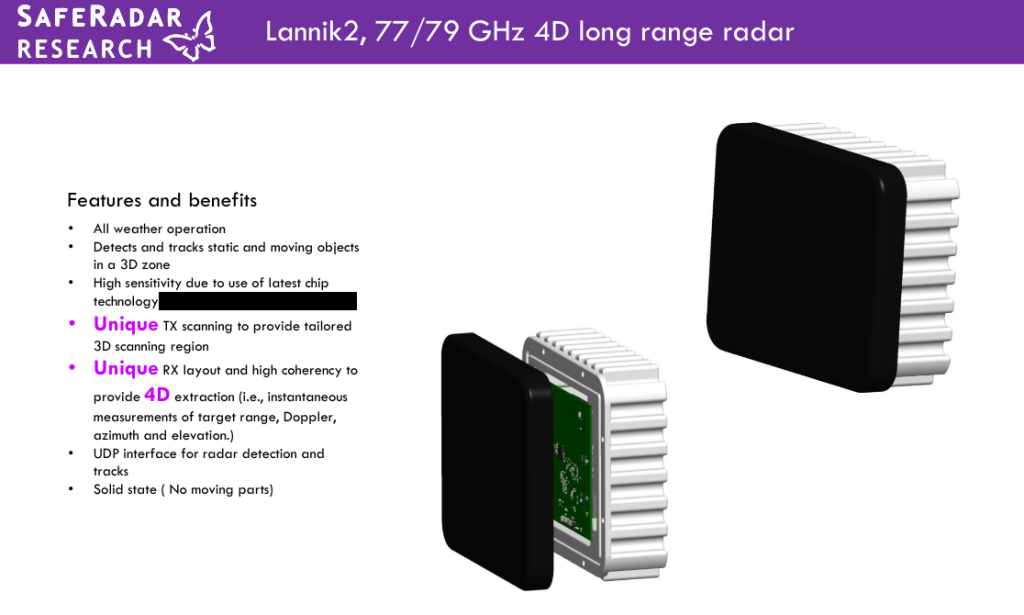
——
Products
Radar System
Lannik 2
Lannik 2 is a premium 4D imaging radar from SafeRadar (Certified 2021) that is mainly used for autonomous airport gate monitoring.

Herein, you can download and examine the product sheet.
Projects
New Radar Systems
Lannik Eye-man (Dual band, i.e., 60 + 77GHz)
Lannik Eye-Man, is the next generation of the Lannik systems (in particular for Lannik 2) is a novel dual band 4D imaging radar working at
both 60 and 77GHz.
Shall also meet the future commercial radar requirements for 4D imaging radar systems in terms of angular, range and Doppler detection & estimation performances, e.g., detection range, RCS dynamic range, ambiguities and so on. All of the Lannik systems relies on the latest standardized chipset technologies and provides high resolution in range, Doppler and DOA (in azimuth and elevation).
Lannik X
Lannik X is novel low cost X-band system operating between 9.2-9,4 GHz. The main applications are adversarial drone surveillance and tracking at drone airports, critical infrastructure protection and city surveillance.
Lannik 1 Drone Radar
Lannik 1 Drone Radar is a small single chipset radar (about 5 by 5 cm, e.g., similar to a corner radar for automotive) that is requested to be used on drone platforms. This radar is used for improving the situation awareness of the drone system, .e.g, preventing crashes with other drones and/or power lines.
….
Radar Application and Software
SLAM
Simultaneous localization and mapping is the problem of constructing a map of an unknown environment while keeping track of a vehicles location within it. We have experience in SLAM using Radar only, and sensor fusion using Lidar/Radar.

Tracking & Association
Tracking analysis is based on either real data analysis (if necessary employ synthetically injected targets) or Monte Carlo simulations using different Swerling models of the target.

Detection & Estimation
Analyzing detection and estimation performances either based on real data collections (e.g., computing ROC curves) or simulations using proper statistical models of the radar return echoes (including clutter and multipath).


Novel Antenna design and analysis
Examine array antennas regarding the influence of various antenna hardware artifacts, e.g., mutual coupling, excitation errors, mounting errors (patches), and so on. For instance, the performance is given in terms of RMS sidelobe level and average gain performance.


Radar applications & Sensor Fusion
Occupancy/Free space grid, SLAM and sensor fusion with LIDAR, Camera are important R&D topics in current and future automotive sensor systems.
